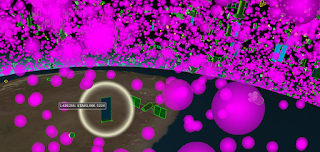Starlink deorbiting satellite - StarCatcher?
Starlink represents unprecedented constellation even compared with to other proposed constellations by an order of magnitude. Furthermore, SpaceX seems to favor a single orbital altitude of 550km with three inclinations for initial deployment, abandoning higher 1200km orbits. Although they plan to actively deorbit ageing satellites, use atmospheric drag to ensure passive deorbiting in less than 25 years, and use active orbit avoidance, any collision near such orbit would quickly cause cascading effect and bring down whole Starlink constellation through well known Kessler syndrome. Not to mention almost immediate evacuation of ISS.
So SpaceX must plan for active removal of inactive satellites or other orbital artifacts that represent danger to the constellation. Unlike other proposals, SpaceX has the following unique advantages:
The game changer is the low cost of such solution. SpaceX will need to develop such a system for maintenance of Starlink orbits. With projected cost of half a million dollars for manufacturing and half a million per launch, SpaceX could offer deorbiting price between one and two million USD per orbital item. For example, it could deorbit whole original Iridium constellation with just two Falcon 9 launches. At that price point, garbage collection and disposal becomes cost effective for old government satellites and upper stages. Just one such launch per year (which is really a minor expense for US government) would greatly reduce generation of additional orbital debris caused by gradual disintegration of old satellites and upper stages in LEO. The same StarCatcher design could be used in GEO for capturing and dragging non-functional satellites from GEO arc to graveyard orbit.
 |
| Leolabs presentation of LEO space debris |
So SpaceX must plan for active removal of inactive satellites or other orbital artifacts that represent danger to the constellation. Unlike other proposals, SpaceX has the following unique advantages:
- it has the cheapest launcher per mass to orbit
- it has many launches to the same orbital inclination (for Starlink satellite deployments)
- it mass produces Starlink satellite bus (with estimated cost of 500000USD per satellite, which is close to more complex cubesats)
- its Starlink satellites already have significant deltaV budget (measured in hundreds of m/s)
The game changer is the low cost of such solution. SpaceX will need to develop such a system for maintenance of Starlink orbits. With projected cost of half a million dollars for manufacturing and half a million per launch, SpaceX could offer deorbiting price between one and two million USD per orbital item. For example, it could deorbit whole original Iridium constellation with just two Falcon 9 launches. At that price point, garbage collection and disposal becomes cost effective for old government satellites and upper stages. Just one such launch per year (which is really a minor expense for US government) would greatly reduce generation of additional orbital debris caused by gradual disintegration of old satellites and upper stages in LEO. The same StarCatcher design could be used in GEO for capturing and dragging non-functional satellites from GEO arc to graveyard orbit.

Comments
Post a Comment